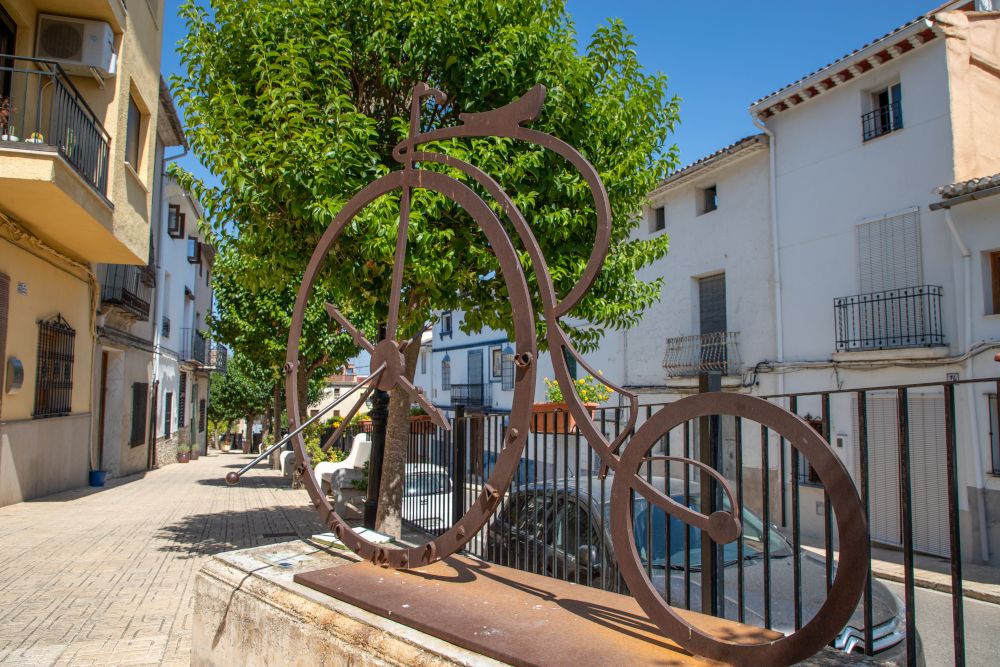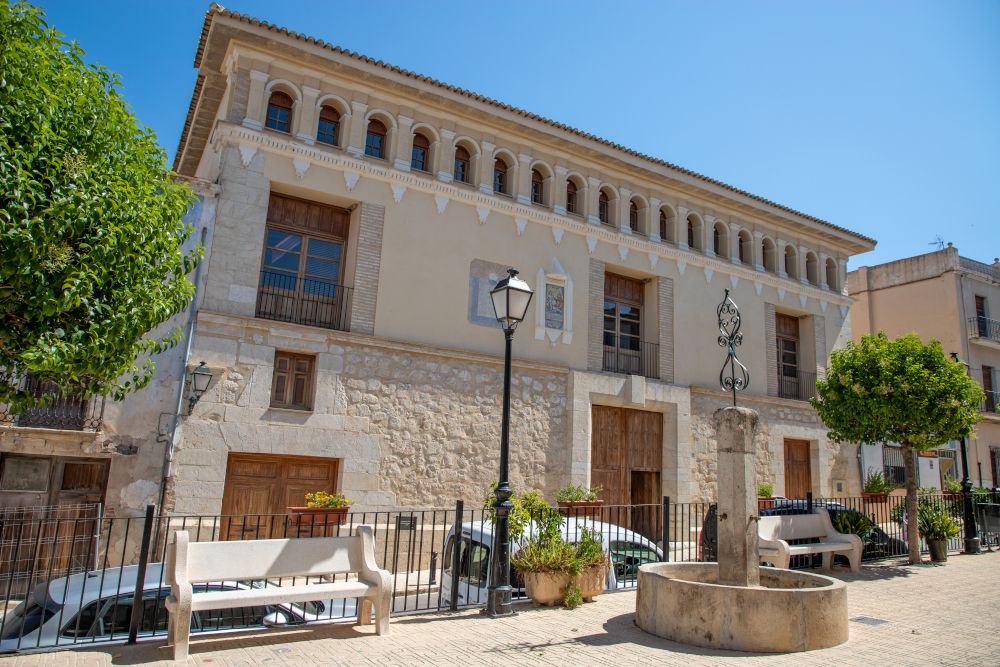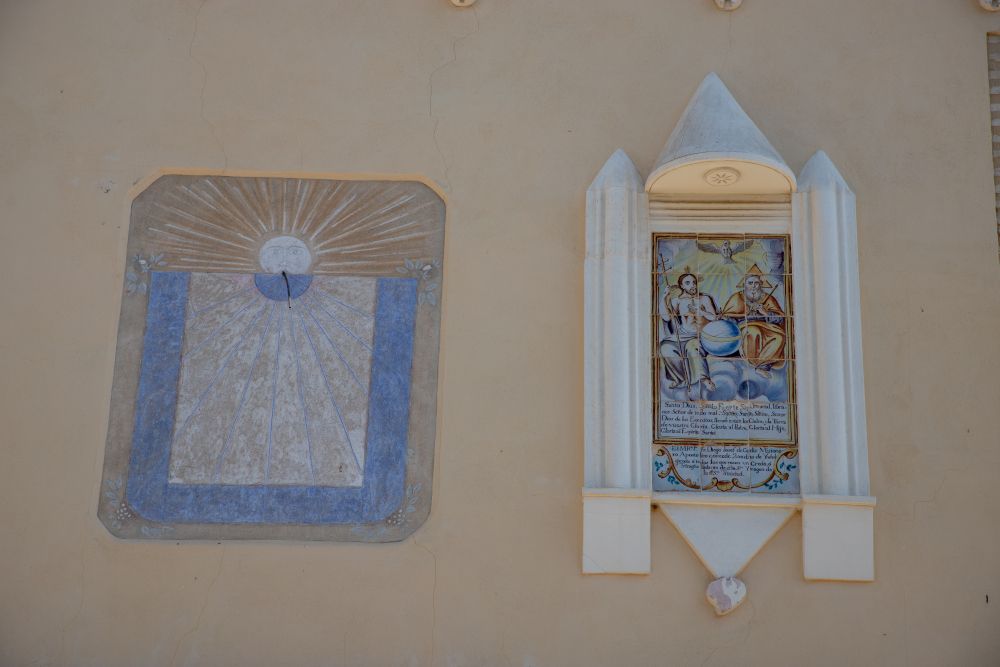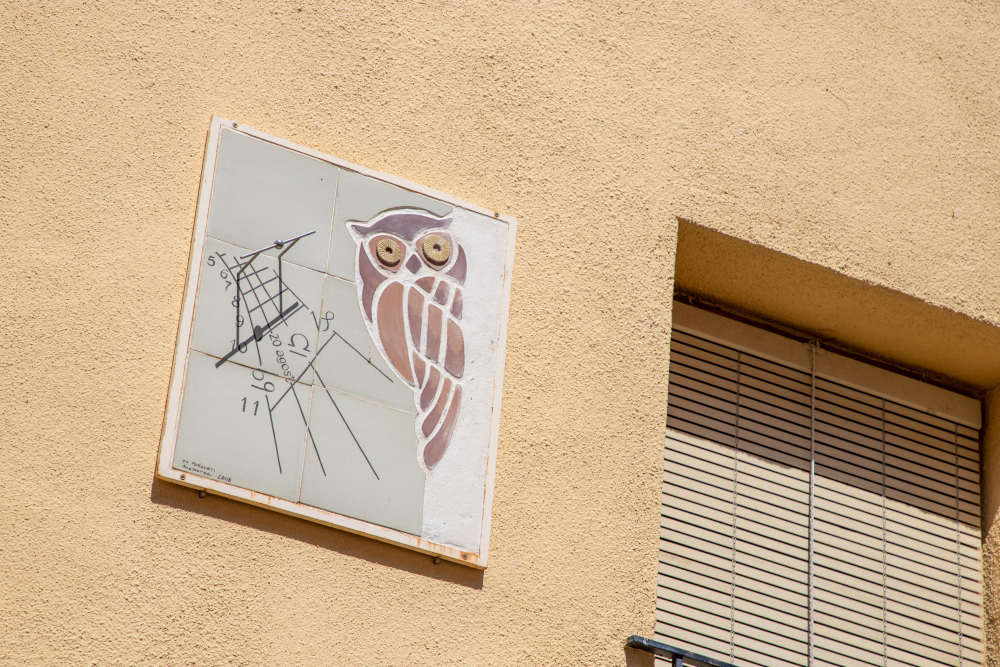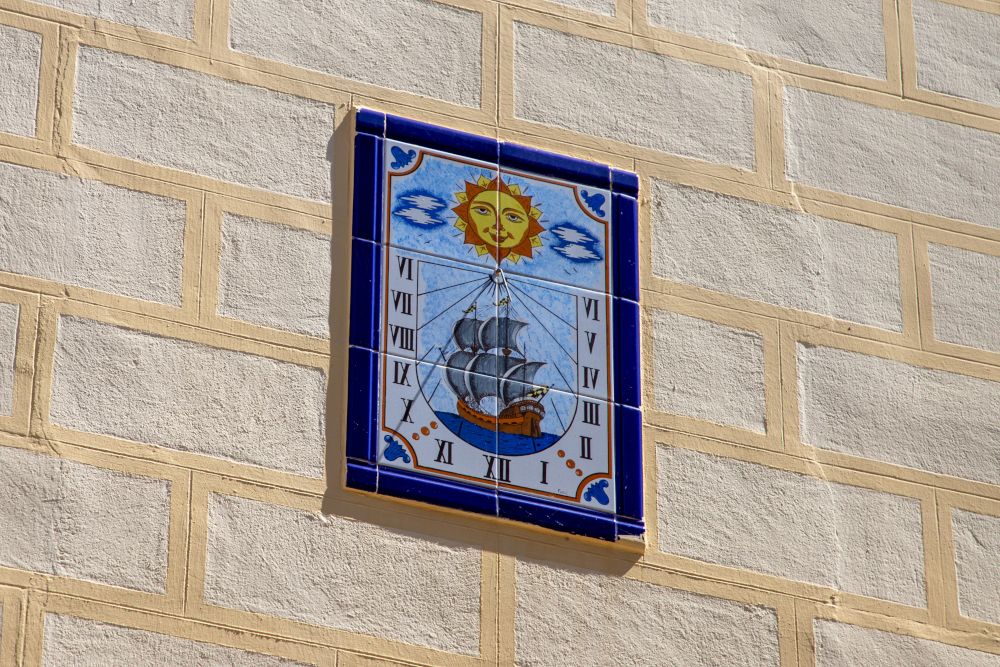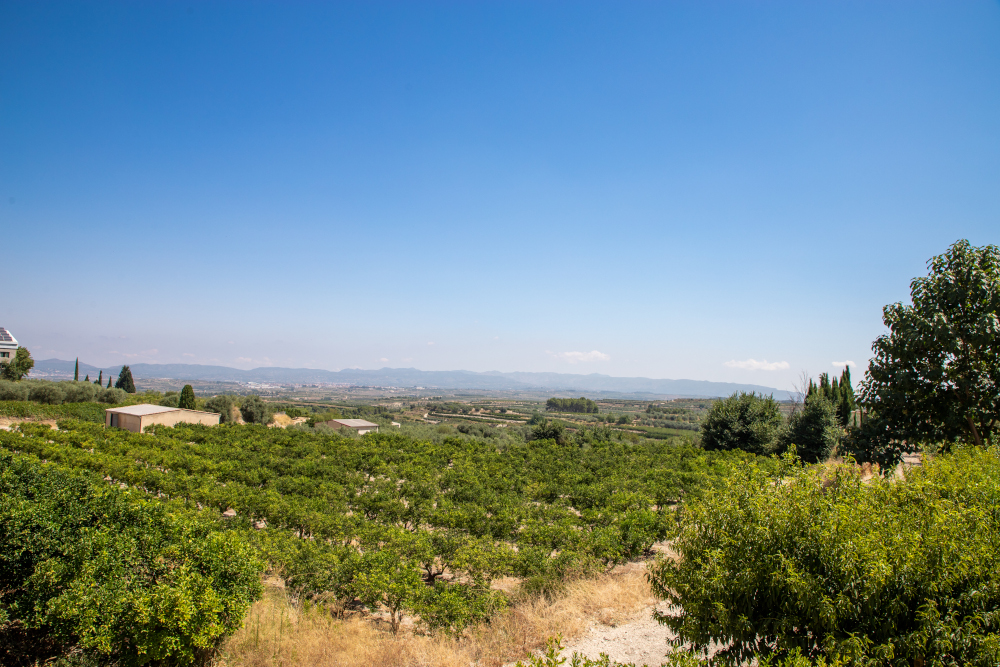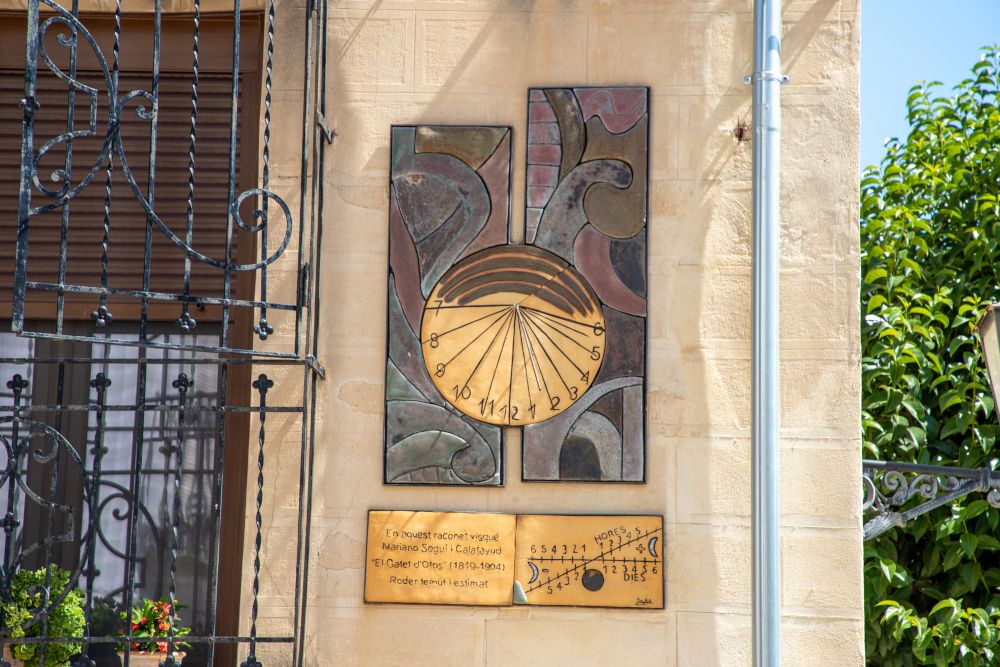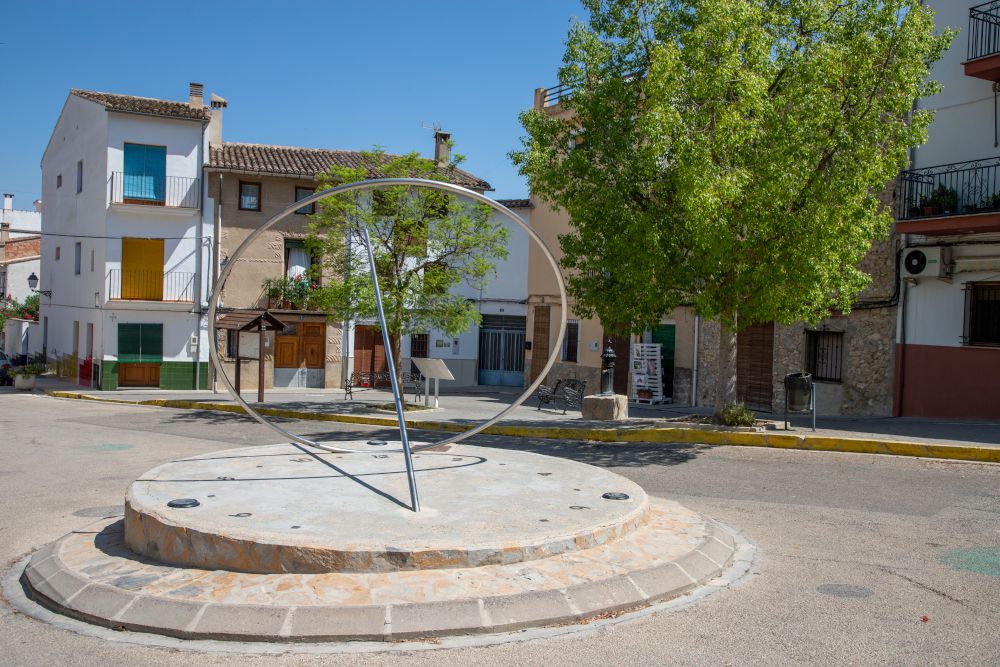Otos
In the shade of the Benicadell range, we find the village of Otos, which extends as a narrow, elongated shape perpendicular to the mountain in a northerly-southerly direction.
Its maximum altitude (1022 m.) is registered at “Alto del Morral”, or “Collao”, a point which serves as the administrative boundary for a total of four municipalities. The lowest point today is around 140 m. above sea level, in a location that is fairly removed from the village centre: the beautiful centre of “Valle Blanco”, where the River Albaida caresses the village of Benisuera and receives the tributary waters of the River (nowadays an overflow area of the Bellus Reservoir).
Gastronomy:
Local dishes include baked rice, “arroz en tanda”, “l’arròs fesols i amb naps” (rice with beans and turnips), and the sweets “fogassa” and “pastissets of moniato”.
Places of interest:
The most important building in Otos is the Palace of the Marquis of San José (or Otos), from the second third of the 18th century.
Among the local religious architecture, mention may be made of the parish church of the Immaculate Conception (18th century).
The Hermitage of Our Lady of Sorrows.
THE PALACE OF THE MARQUIS OF SAN JOSÉ (18TH-CENTURY)
The palace was completely restored in 2000, after the building was bought from the ONCE organisation, its former owner, after prolonged negotiations. Its architectural and heritage value is priceless.
PARISH CHURCH OF THE IMMACULATE CONCEPTION (1724-48)
Neoclassical-Jesuit style. Features include frescoes of the four evangelists, an oil painting of the Holy Trinity (attributed to Vicente Lopez), a Gothic-Renaissance limestone font, etc.
HERMITAGE OF THE MOTHER OF GOD OF SORROWS
Dating from the 18th century, with later reforms such as the Romantic paintings, the luminosity of which is highly unusual. Mention may also be made of the main altarpiece.
MICENA
“Torralba, losas y alacranes, y Micena, el que no tiene pan no merienda”
Torralba and Micena were settlements dependent on Carbonera Castle and which were later annexed to the municipality of Otos.
Micena was deserted during the period from 1450 to 1527, after the forced removal of the few Saracens who inhabited the site. The action was ordered by Bellvís, who at the time was the Baron of Belgida-Otos. The churches of Beniatjar, Otos, Carrícola and the municipalities of Torralba and Micena were dependent on the parish church of Belgida. The rector was entitled to the first fruits of these villages, although the income from the old mosques of Carrícola and Otos were used to construct their respective churches, according to a decree dating from early August 1541.
Until some fifty years ago, they served as temporary residence for people working the agricultural terraces in the area, as with the means of transport of the time they were not capable of covering the five or six kilometres that separated them from the village, respectively, on a daily basis. They were also used for wine production and crushing grain, They are now completely deserted and in ruins, especially “Torralba la de arriba”, as the so-called “Torralba la de abajo” was demolished for the construction of the Bellús reservoir.
The SL-10 trail crosses the municipality of Otos, leading to the “Pasqualat” ice well, excavated from the rock, and which was formerly used for storing snow. There is a recreational area nearby.
Festivities:
- Saint Anthony the Abbott on 17th January.
- The Day of the “les Cassoletes” (made with pig’s ear and snout), held the Thursday before Carnival.
- On Saint Joseph’s Day, a large paella is prepared for the whole village.
- The village’s main festivities are held from 6th and 8th August in honour of Christ of the Faith, Saint Abdon and Saint Sennen and the Immaculate Conception.
